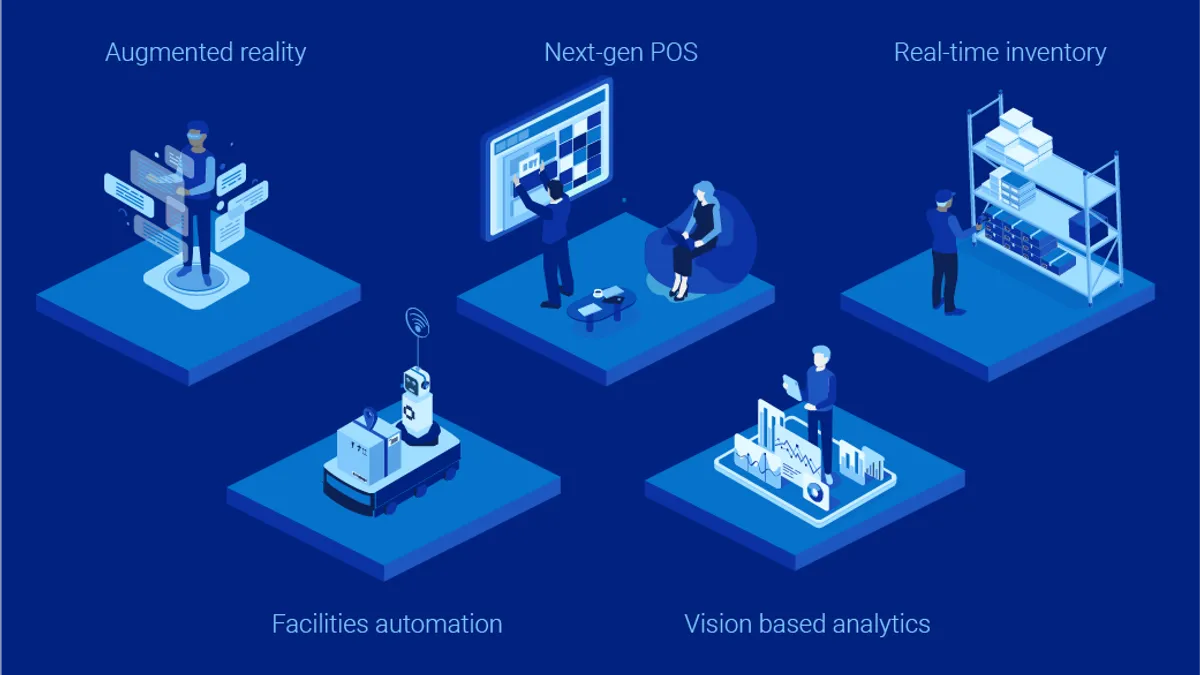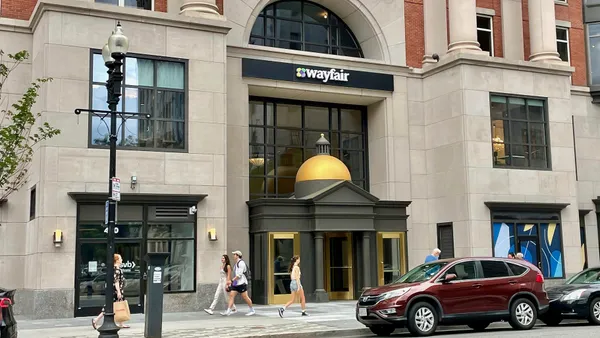There’s been a lot of talk lately about artificial intelligence (AI) and generative AI (GenAI) and how these technologies are going to revolutionize retail. But the retail revolution can’t be accomplished with sweeping generalizations about putting more technology into stores. Successful retail outcomes are built using technology to solve specific challenges, expanding on wins and recognizing opportunities for synergies and efficiencies that can lead to lower marginal costs and timelines for running more AI, GenAI and other innovative technologies at the retail edge.
While use cases abound, let’s take a closer look at three of the more common challenges for retailers and how AI and GenAI at the edge can solve them.
The self-checkout conundrum
Self-checkout is in demand with consumers; 43% prefer self-checkout, with that number increasing to 53% for younger shoppers, ages 18 to 44.1 However, many retailers believe self-checkout is to blame for increasing shrinkage rates. Several are backing away from self-checkout to appease shareholders.2
With that said, there’s no need to shift into reverse on self-checkout. Modern, AI-driven applications enable faster and more accurate self-checkout with safeguards to prevent both theft and human errors. Advanced solutions use machine learning (ML) to detect suspicious behavior patterns. These can be combined with technologies like computer vision, using AI to cross-reference visual data with scanned barcodes to ensure the right product was scanned.
By making self-checkout more intelligent, stores can give customers what they want while reducing staffing requirements and shrinkage to protect the bottom line.
Meeting customer expectations for exceptional experiences
In retail, excellent customer experiences are key — and getting increasingly difficult to deliver. Shoppers have high expectations for personal attention and assistance, a wide selection of options that are always in stock and easy returns — all while receiving coherent and integrated personal interactions across every channel.
AI technologies, such as GenAI, natural language processing (NLP), ML and computer vision can play a role in personalizing recommendations, automating customer service and generally providing a smoother shopping experience for customers, both in store and online. For example, computer vision can be used in the store to alert associates of stockouts and opportunities to optimize merchandising, two key drivers of customer satisfaction. Intelligent automation can provide a real-time view across the organization for better mapping of stores, staff, items, assets and workflows to reduce human error and resolve issues faster, leading to smoother operations and happier customers. AI can also enable end-to-end personalization at scale, giving retailers the ability to optimize omnichannel customer experiences.
Staffing: To AI or not to AI?
AI allows for connected, scalable and secure operations, both in the front and back of the store. Those AI capabilities, augmented and enhanced with employee skills, is a recipe for success.
For example, AI-driven computer vision can be used to alert staff when checkout lines get too long, or when popular items are about to need restocking. Using automation and AI at the core, retail operations managers can provision, deploy, secure and manage their SKUs, data, applications and infrastructure to increase visibility into store incidents, resolutions and performance metrics.
Using AI in this manner helps people do their best work, streamlines operations and ultimately lowers costs.
Making it happen: AI at the retail edge
Once you’ve chosen your starting point, it’s time to put the power of technology behind your use case. Because retail use cases are so numerous — and also constantly evolving — it makes sense to seek solutions that create a powerful, flexible foundation capable of supporting many different initiatives.
As one example, solutions that combine the power of Dell NativeEdge, NVIDIA® AI Enterprise, ServiceNow® Smart Operations and ServiceNow Retail Operations can help retailers transform stores into intelligent, human-centric environments. These solutions are designed to work together to increase store performance by reducing operational costs and providing a foundation for AI-driven applications that help employees do their jobs more efficiently and effectively. This approach addresses today’s retail challenges and also positions retailers to lead in an increasingly competitive and omnichannel-driven market.
Are you ready for the future of retail?
The future of retail belongs to those who are ready to reimagine it today. Learn more about modernizing the retail edge by reading Smart Stores, Engaged Shoppers: The AI-Driven Retail Edge.
[1] Supermarket News, What you think about: An embrace of self-checkout? February 2024.
[2] Retail Dive, Battling shrink and theft across the globe, April 2024.










